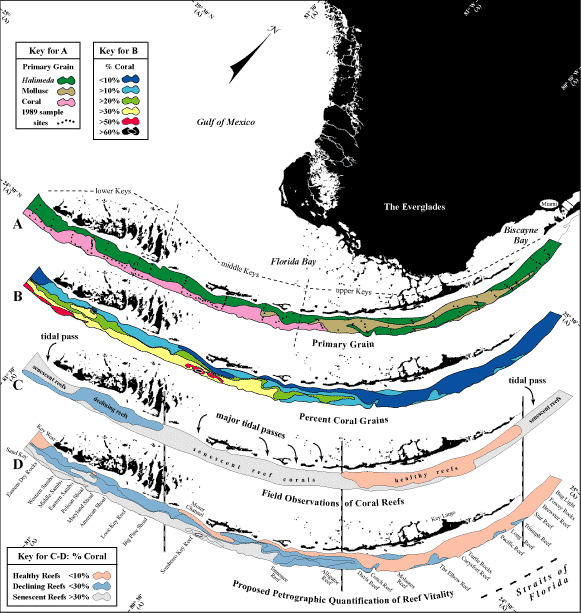FISC - St. Petersburg
Figure 61. (A) Contour map shows areas where each of the three primary grain types (Halimeda, mollusc, and coral) was dominant in 1989 (from Lidz and Hallock, 2000). Black dots indicate 1989 sample sites. (B) Distribution and percentages of coral grains in 1989. (C) Generalized distribution of healthy, declining, and senescent reefs based on field observations. Correlation of observed reef vitality (C) with coral-grain proportions (D) shows that coral-grain percentages are a reliable method to delineate areas of healthy, declining, and senescent (senile) reefs quantitatively. Parallel vertical lines align areas of different reef vitalities with corresponding coral-grain percentages. Lidz and Hallock (2000) proposed a quantification method to determine reef vitality based on coral-grain percentages: where corals are present yet coral grains form <10% of sediment components, reefs are healthiest. Where coral grains compose 10% to 29% of the sediment, reefs are declining. Where coral grains constitute >30% of the sand, reef framework is rapidly deteriorating. In the middle and lower Keys in 1989, coral grains exceeded 50% and in some places 60% of all skeletal fragments along the margin. Latitude and longitude tick marks apply to (A).
|
Can't see the printable PDF version? Get the free Adobe Acrobat® Reader. |
